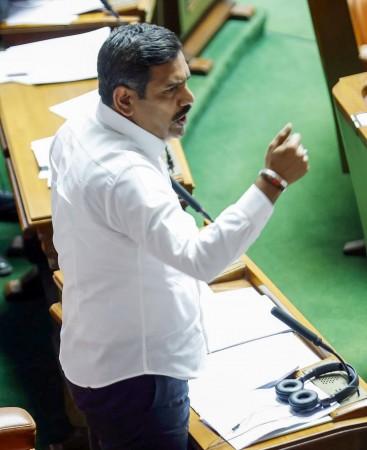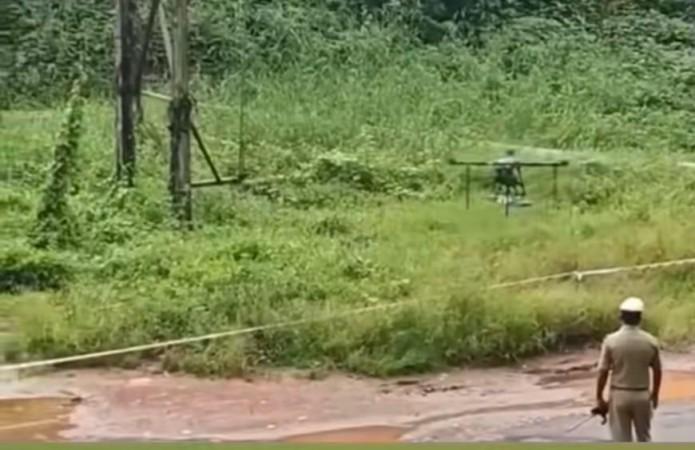
The tranquil temple town of Dharmasthala in Karnataka has become the epicenter of a harrowing investigation into alleged mass graves. The Special Investigation Team (SIT) is leading this complex probe, which has captivated public attention and stirred significant political and social discourse across the state. The investigation was initiated following claims by an anonymous complainant who alleged that he was forced to bury the bodies of women and girls who were raped and murdered in Dharmasthala.
This individual provided a detailed statement to a court in Mangaluru district, which has since become a pivotal element of the SIT's inquiry. The complainant insisted that the bodies bore clear signs of sexual assault, with injuries indicative of violent abuse, and requested that the exhumations occur in his presence.
The SIT, under the leadership of DGP Pronab Mohanty, has been diligently excavating burial sites in the area. To date, they have completed work at 12 sites, discovering human remains at the sixth location. The team is now preparing to excavate the 13th site using advanced technology, including drone-mounted Ground Penetrating Radar (GPR), to ensure a comprehensive search for evidence.
This investigation has not been without its controversies. Karnataka BJP President and MLA, B.Y. Vijayendra, expressed concerns about the direction of the probe, suggesting that the involvement of the Social Democratic Party of India (SDPI) and Communist elements has led to suspicions. "Is SIT probing the Dharmasthala murders treading the wrong path?" he questioned, emphasizing that the sentiments of the devotees of the presiding deity Manjunatheshwara have been hurt by the ongoing developments.

The political ramifications of the investigation have been significant. The Karnataka BJP has raised the issue in the state Assembly, urging Home Minister G. Parameshwara to make a public statement to quell the rumors circulating on social media and within the community. Former Minister and BJP MLA S. Suresh Kumar highlighted the need for transparency, pointing out that Health Minister Dinesh Gundu Rao had previously stated that the Mangaluru police were competent to handle the probe, and that the SIT was formed under pressure from leftist groups.
In response to the political pressure, Minister Dinesh Gundu Rao clarified, "We are siding with no one. We do not support either the Left or the right wing. We want the truth to come out." Speaker U.T. Khader has agreed to allow a discussion on the case, while Home Minister Parameshwara reiterated that without an interim report, he could not make a definitive statement. The investigation has also drawn the attention of the National Human Rights Commission (NHRC), which has joined the probe. NHRC members have been on the ground in Dharmasthala, collecting documents from the SIT and local police, and inspecting the burial sites. Their involvement underscores the gravity of the allegations and the need for a comprehensive and impartial investigation.
The Dharmasthala temple family, deeply entwined with the town's religious and cultural fabric, has also been affected by the unfolding events. Harshendra Kumar D., Secretary of the Dharmasthala Temple Institution, has approached the Supreme Court, challenging the quashing of a restraining order against a YouTube channel accused of broadcasting defamatory content related to the mass grave case.
The temple family has expressed concerns over the impact of such content on their reputation and the temple's standing as a prominent Hindu pilgrimage center. As the SIT continues its work, the investigation has already yielded some significant findings. A torn red blouse and a PAN card belonging to a woman named Lakshmi were recovered from the first burial site. Additionally, a male skeleton and bones have been sent to the Forensic Science Laboratory (FSL) for analysis.
These discoveries have added layers of complexity to the case, raising questions about the identities of the victims and the circumstances surrounding their deaths. The Dharmasthala case is not the first instance of alleged mass graves in India. Historical parallels can be drawn with the infamous Nithari killings in Noida, Uttar Pradesh, where the skeletal remains of multiple victims were discovered in 2006.
The Nithari case involved the abduction, sexual assault, and murder of children and young women, leading to widespread public outrage and a protracted legal battle. Similar to the Dharmasthala investigation, the Nithari case highlighted systemic failures in law enforcement and the need for rigorous investigative procedures.









